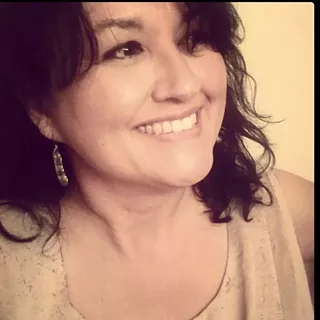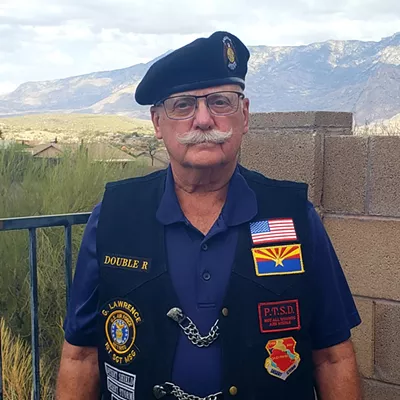If you want to know what's going on at the former Monterey Motel off Miracle Mile, the best place to start is with a tour from Dar Dobroslavic.
Although most of the remodel on the 1940s-era motel is complete, Dobroslavic still has some imagining to do as she describes what goes where at what is now called Monterey Court Studio Galleries, a redevelopment project headed by Dobroslavic and her business partner, Greg Haver.
Standing in the middle of the property's courtyard, Dobroslavic turns full circle, looking at each of the project's casitas being leased as primarily artist workspaces and galleries. Outside, between the casitas, Dobroslavic asks you to envision what she describes as "creative placement"—between the casitas and lining the courtyard will be about 20 outdoor marketplace spots selling almost everything from art to food.
At the entrance to the property is the motel's former office building facing Miracle Mile, going through its own transformation into a restaurant with help from Vincent Mast, hired as the Miracle Café's general manager.
Mast said he thinks the restaurant will be open by October. Planning the menu with Dobroslavic, Mast said the idea is to have wide appeal with lots of vegetarian and gluten-free options, too.
"This is all what I call creative placement. Restaurants and food are part of that, and then the combination of the marketplace wrapping itself around the artists," Dobroslavic said. "It's an amazing way to cluster cultural industries, bringing them together so they can make love to each other."
Dobroslavic got involved in the Monterey project when Haver, her friend of more than 20 years, told her he wanted a change. Haver specialized in residential flips and Dobroslavic worked as his realtor.
"We took a break and he came to me in December and said he was bored, and I said, 'Me too.' I was getting more interested in commercial real estate because a lot of people our age are suddenly interested in going out on their own. We decided to look for a commercial project we could do together, and we bought this," Dobroslavic said.
The motel was opened in 1941 by Mike and Marge Opel; Dobroslavic and Haver kept its original neon sign, but had it refurbished with the new business name, retaining the sign's mountains and cactus in the background.
Dobroslavic said she never thought about doing a redevelopment project like the Monterey, but she's always been interested in Tucson arts and culture. Her life in Tucson goes back to 1978, when she was a homeless teen living in Tucson and hung out around downtown and Fourth Avenue.
"I've always been a fan and lover of it all—all creative aspects of Tucson. My experience has made me picture Monterey Court as a multicultural and multigenerational destination," she said.
She knows others have compared the project to Old Town Artisans in downtown Tucson, and Dobroslavic understands why, but to her the only connection she draws is how Old Town used to be a special place for her family when her kids were young. That's what she wants to create at Monterey, "a place where people can make memories."
The Monterey project is the latest in a string of rehab projects taking place along Miracle Mile that have breathed new life into these Tucson relics, rather than let them face a bulldozer or sit in disrepair. It's also expected to breathe new life into the 1 1/2-mile stretch between Interstate 10 and Oracle Road, not always known in the past as the best neighborhood in town.
Dobroslavic pointed out the first project she feels truly began the transformation: the $1 million makeover at the Golden Pin Lanes bowling alley. Then there's the Gospel Rescue Mission's purchase of the Wayward Winds Lodge to expand its housing program. The last project was the Ghost Ranch Lodge, a historic property designed by Tucson architect Josias Joesler with a logo by artist Georgia O'Keefe; it was recently reopened as an affordable senior housing complex.
While the Monterey project is unique in that it focuses on arts and food, Dobroslavic said she doesn't feel they are taking the lead in furthering Miracle Mile redevelopment, but riding the coattails of all the work that's taken place before.
"This has been a full city effort, from Tucson Police Department to Councilwoman Karin Uhlich's office, and none of this would be possible without the work of Demion Clinco," Dobroslavic said.
Tucson preservationist Clinco completed the study that's been used as a vision or guide to turning the Miracle Mile and Oracle Road area around. He is also credited with helping Tucson recognize the importance of the old neon signs, the motor motels and their historic relevance to Tucson.
Back in the middle of the courtyard, Dobroslavic points to one end that will eventually be home to an outdoor fireplace, and the other end, a staging area for music and seating.
"There's one three-letter word we hear people say when the come here and that is 'wow,'" Dobroslavic said. "We're not hearing that people won't come down to Miracle Mile, but that there are good reasons to come down here."







